
- Red Search
- Resources
- 5G Statistics Australia
5G Technology & Usage Statistics Australia 2024
-
 Daniel Law
Daniel Law
As the 5G technology continues to expand and evolve in Australia since its roll-out in November 2019, its impact on many industries, institutions, and daily life in the country has been significant.
5G, the fifth generation of wireless cellular technology, is set to become a cornerstone for wireless telecommunications, IoT, self-driving cars, advanced gaming, and digital twin technologies, among others.
Its speed and reliability can transform how Australians use the internet. But how do the figures compare to this potential?
Let’s delve deeper into the statistics and understand how 5G currently impacts the technology and usage of everyday Aussies, businesses, institutions, and the government.
5G Connectivity Statistics Australia
Globally, 5G connections in 2023 surpassed 1.5 billion. That’s only 4 years after the technology rolled out, making it the fastest-growing mobile broadband technology.
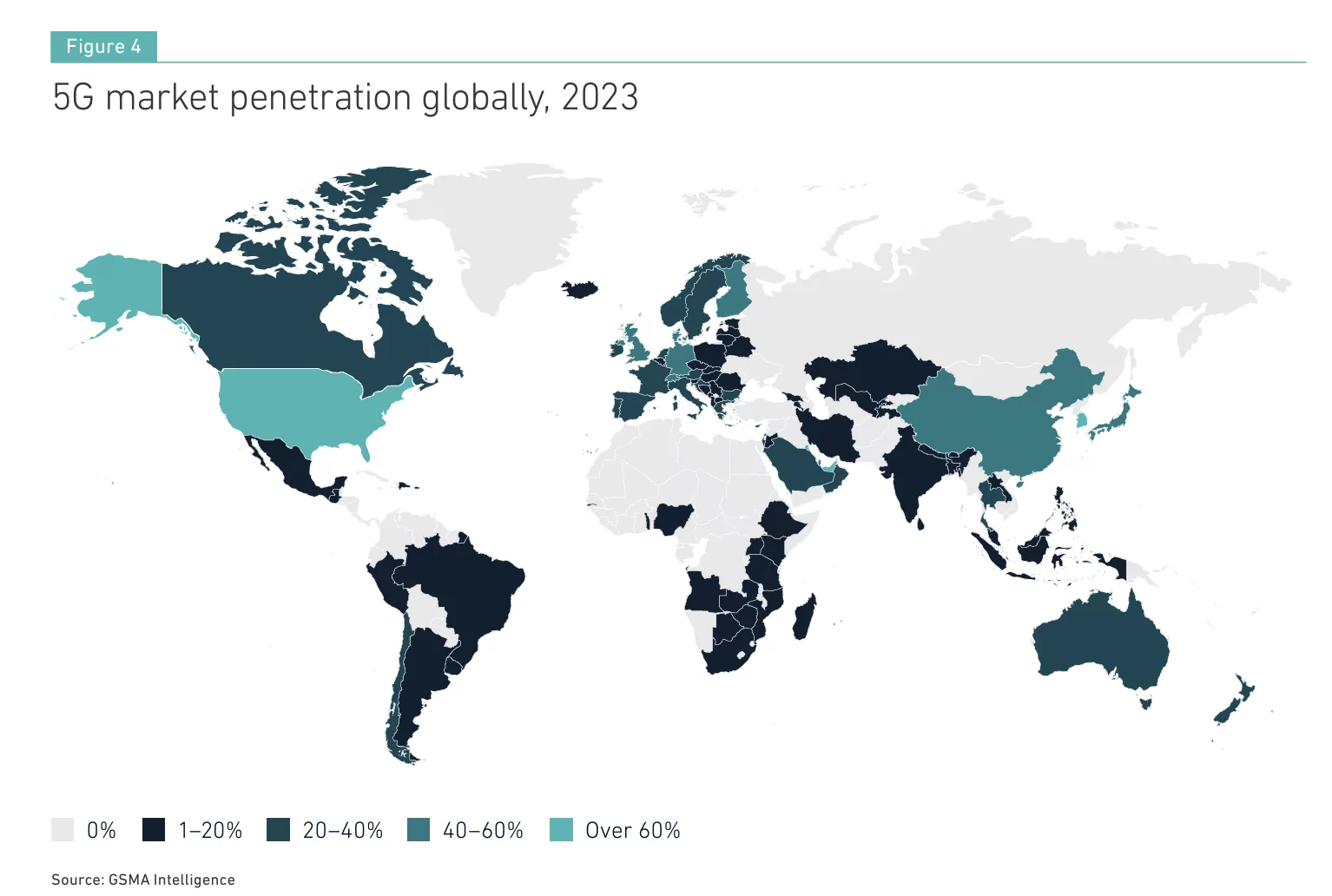
Source: GSMA Intelligence
In Australia, one of its major telecom providers, Telstra, already has over 200 mobile sites powered by 5G. Over 3,000 suburbs and 200 cities have 5G coverage from all major telecom services, including Sydney, Brisbane, Melbourne, Perth, Adelaide, Canberra, Tasmania, Queensland, and Hobart, among others.
The target is to provide 5G access to over 95% of Australia’s population by mid-2025, up from the current 85% connectivity.
Phasing Out The 3G Network Across Australia
The roll-out of 5G in 2024 means getting closer to the end of 3G. Introduced in the early 2000s, the third generation of wireless communication is forecasted to end its service in 2024. Telstra announces that it will delay its 3G network shutoff until 31 August 2024.
3G was developed for calls, texts, and basic internet services. Now, video traffic accounts for 73% of all data traffic, and mobile network data traffic increased by 28% between 2022 and 2023, according to Louise Hyland of the Australian Mobile Telecommunications Association (AMTA).
Our network needs and demand have significantly outgrown 3G’s capabilities. Hence, 5G connectivity will only expand and improve in the following years.
GSMA Intelligence also stated that Australia’s 5G Connectivity Index. is currently rated at 50. The connectivity index measures several indicators and arrives at a rating. A higher score represents stronger performance in delivering a 5G network across a country’s infrastructures and population.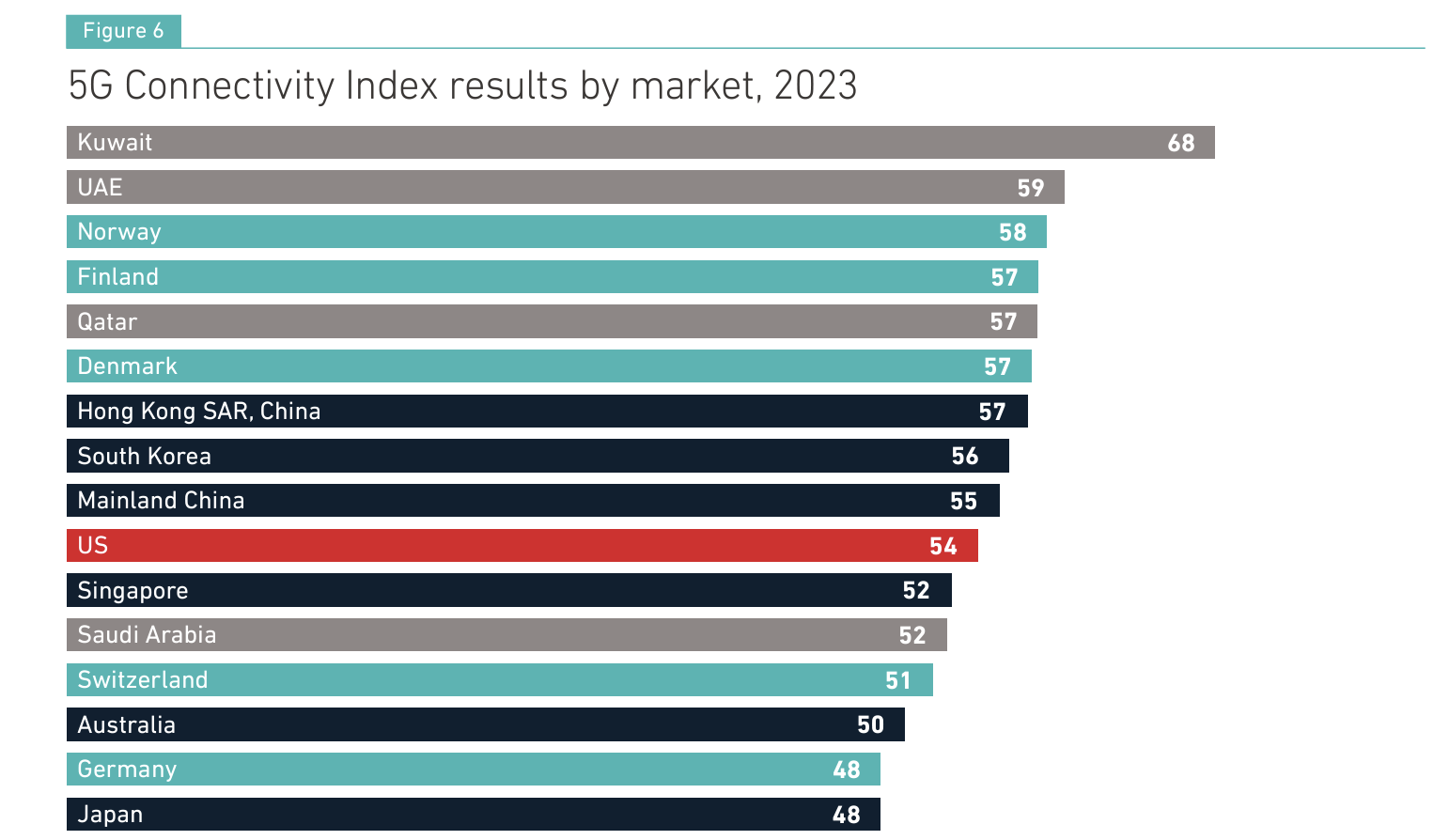
Source: GSMA Intelligence
5G for Businesses Statistics
The State of Connectivity in Australia reports that more than 25% of businesses believe that better 5G connectivity can lead to up to 30% revenue growth over the next 12 months. Better connectivity allows for faster sales transactions, enhanced productivity and monitoring, and efficient operations.
About 40% of Australian businesses prioritise improving their connectivity, which is directly linked to revenue growth. Over 60% of these businesses also agree that incorporating IoT, connected devices, and smart facilities can help them operate more sustainably and efficiently.
It’s safe to say Australian businesses are embracing digitalisation. Today’s industries revolve around connectivity and technology to streamline essential business processes, such as logistics, inventory, processing, and big data reporting.
5G Business Adoption Challenges
But embracing 5G won’t come without its own challenges. In Australia and most other countries, the adoption of fixed wireless access (5G) networks remains low.
According to 30% of Australian businesses, the lack of in-house skilled and knowledgeable staff who can deploy and maintain wired and wireless 5G networks is the main barrier to why they have yet to invest in 5G connectivity.
Some artificial intelligence and machine learning applications heavily rely on 5G connectivity. As 25% more businesses and industries plan to adopt these technological breakthroughs in their industries, we expect it to accelerate 5G uptake over the next 12 months.
In fact, almost 50% of Australian businesses plan to invest in AI, ML, and equipment sensing for the long term.
5G Experience Statistics: Speed, Quality, Reliability
OpenSignal’s Mobile Network Experience Report for 2024 revealed Optus as the fastest 5G network in download speed for the 6th consecutive time.
Optus recorded data transfer speeds of up to 208.7Mbps for their 5G network, a comfortable gap ahead of Telstra and Vodafone with 180.1Mbps and 137.9Mbps, respectively.

Source: OpenSignal
A year-on-year comparison shows Vodafone gaining the most momentum with a 36Mbps increase in download speed, while Optus and Telstra dropped by about 20Mbps.
5G upload speed tells a different story. Vodafone topped as the fastest 5G network in terms of upload speed. Telstra held on as the fastest for 5 consecutive reports but recently dropped to last place after being overtaken by Vodafone’s 2Mbps increase—now at 15.8Mbps.
When it comes to coverage experience, Telstra topped the leaderboard with a 9.5-point rating, a tad higher than Optus’s 8.3 and Vodafone’s 6.3 ratings.

Source: OpenSignal
This implies that Telstra’s 5G coverage is the widest and most accessible network in the entire Australia. The rating measures the overall 5G coverage in places where OpenSignal users live, work, and travel.
Let’s not forget about the 5G gaming experience.
In 2024, Optus had the best 5G multiplayer gaming experience and won with the best overall gaming experience. The telecom network scored 82.1 points on a 100-point scale for 5G multiplayer gaming, sitting comfortably in the Good category (75-85), and 74.1 points for the overall Games Experience, under Fair (65-75).
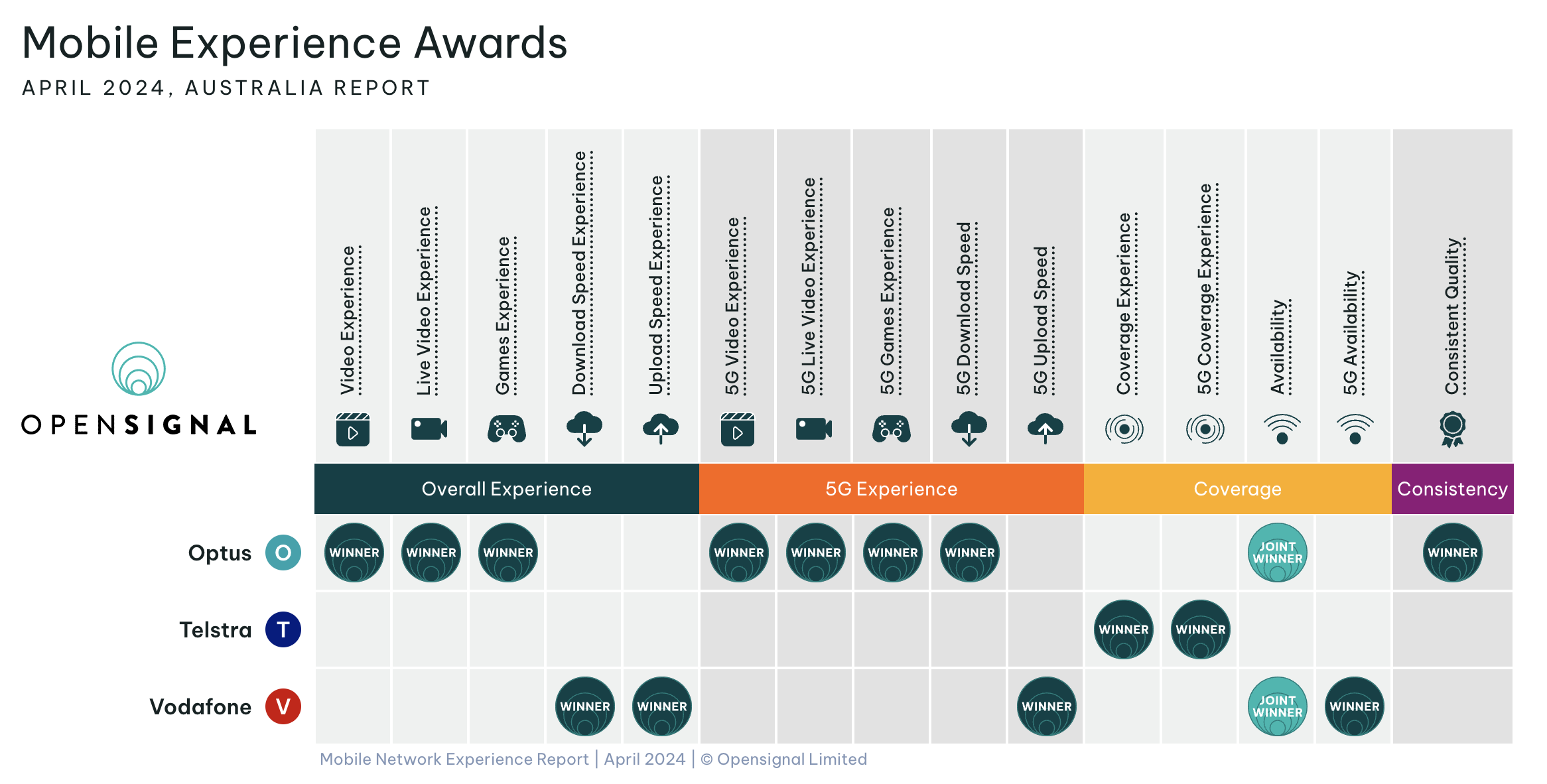
Source: OpenSignal
5G Investment and Market Statistics
Louise Hyland, AMTA’s CEO, reported during the Comms Day Policy Summit last April 2024 that 5G could easily underpin about AU$19.9 trillion worth of goods and services across our global industries. By integrating 5G across our industries, Australia could even increase its GDP by up to $67 billion.
Hyland also emphasises that with the right policy and 5G connectivity, GDP would be boosted by a further $27 billion.
Realistically speaking, many businesses still need to learn to invest in 5G connectivity. 37% of those fear the steep investments and costs required, while 27% are worried about the complexity of changes in their business processes.
Additionally, 28% are still determining if 5G connectivity can handle their enterprise and adjust well to unique logistical and operational structures.
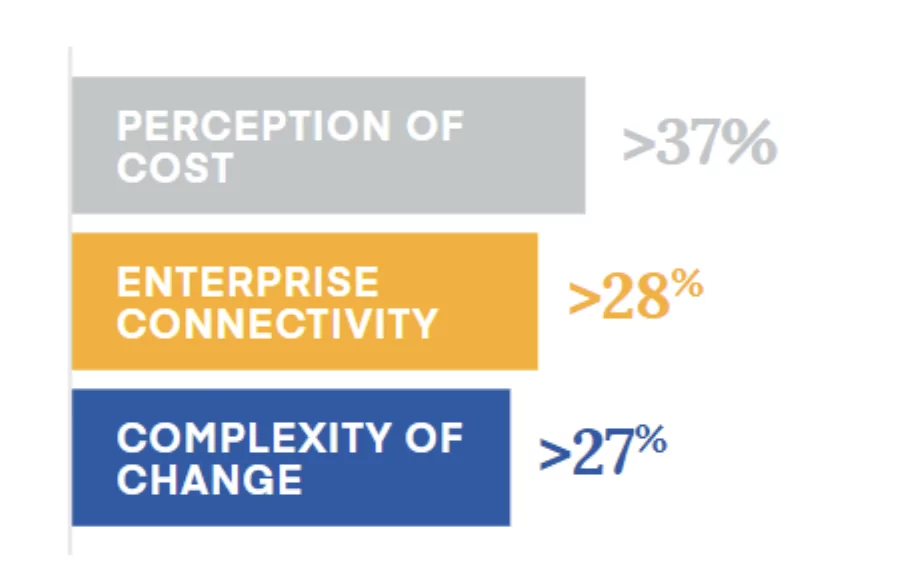
Source: Mobilecorp
Regarding the aspects of 5G that Australian businesses look forward to, 52% said that network security is their main priority. 41% answered network resilience, 39% said bandwidth and speed matter the most, and 30% responded that network segmentation capabilities are the most important aspect they want about 5G.
It shows that network security isn’t the top priority of many business operations that use or look forward to implementing 5G connectivity. When it comes to security, 40% of businesses reported having suffered a network attack in the past.
The results of these attacks significantly vary, but over 25% suffered a major security breach resulting in catastrophic data loss, and more than 20% of those led to steep company fines.
The attacks can be broken down as follows:
- Data Breach: 37%
- Phishing Attack: 30%
- Hacked IoT Devices via Denial-of-Service (DDOS) attacks: 25%
- Ransomware or Zero-Day Attacks: 20%
5G Mobile Statistics
Like its previous generations, 5G is expected to take over mobile traffic as demand for multimedia content browsing, gaming, and streaming increases. Australia is in a position where its mobile speed exceeds fixed broadband speeds as per Ookla’s Speed Test Global Index.
Its mobile transfer speed ranks 26th globally, a 2-place increase, while its broadband speeds sit at 86th, a decent 6-place increase.
Besides, 90% of all mobile subscribers in Australia are forecasted to use 5G and 6G networks by 2030. With smartphone devices forecasted to reach 23.6 million by 2026, we can only infer that 5G mobile connectivity will catch up and increase by the year.
As of 2024, Australia’s 5G network facilities distribution reports that NSW tops the 6 states with about 1,218 5G network site developments. Other states report as follows:
- Victoria (VIC): 917 site developments
- Queensland (QLD): 835 site developments
- South Australia (SA): 444 site developments
- Western Australia (WA): 271 site developments
- Tasmania (TAS): 138 site developments
- Northern Territory (NT): 0 site developments
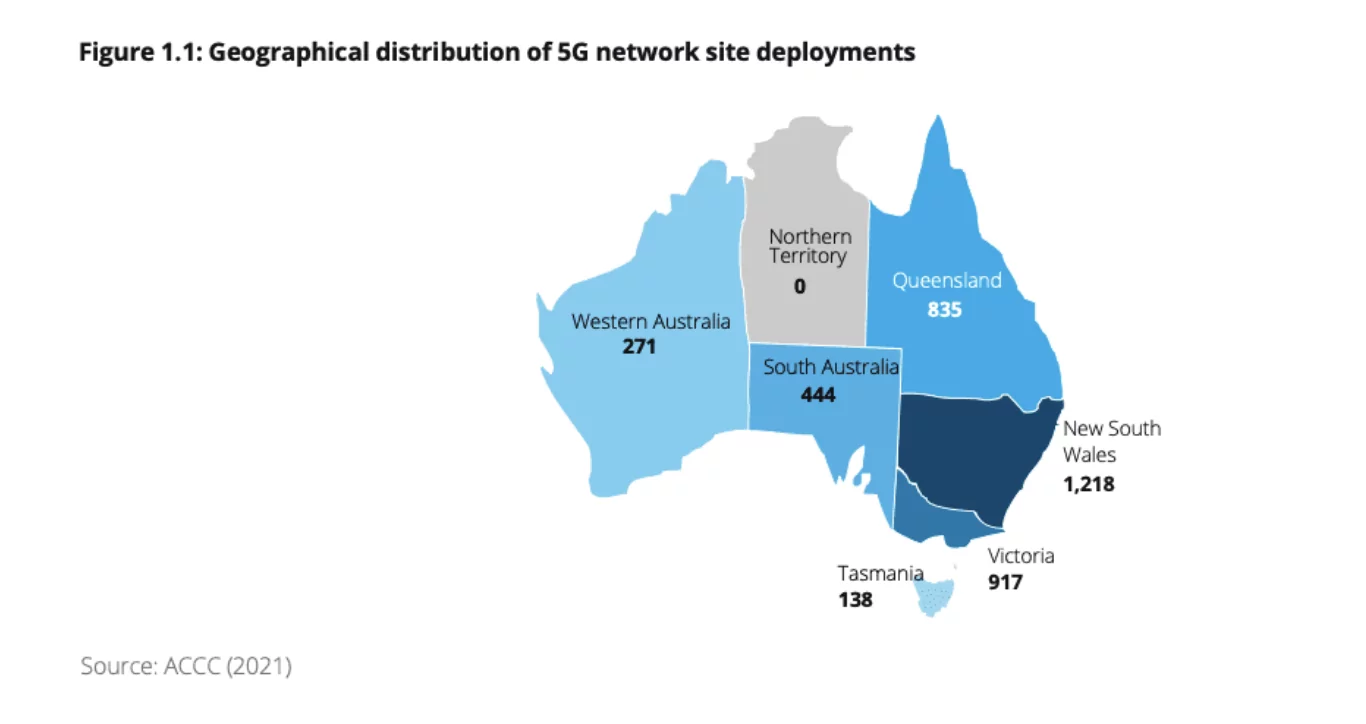
Source: Deloitte Mobile Nation
With the advent of 5G, it’s unsurprising that Australian mobile users spend around 6.8 hours browsing online content daily, with 55% preferring mobile devices over computers.
The percentage of Australian smartphone users who say they connect to the internet over 5 times a day (53%) and over 15 times a day (20%) supports this data.
The Future of 5G in Australia
It’s safe to say that 5G is here to stay, and its growth has been immense and fast within a few years since its rollout.
As more industries, institutions, and households adopt 5G connectivity, we look forward to a more robust and efficient digital space where 5G plays a vital role in eCommerce, business, education, and entertainment.
If you want to read more industry insights and love fresh data, check out our other statistics posts:
Written by






